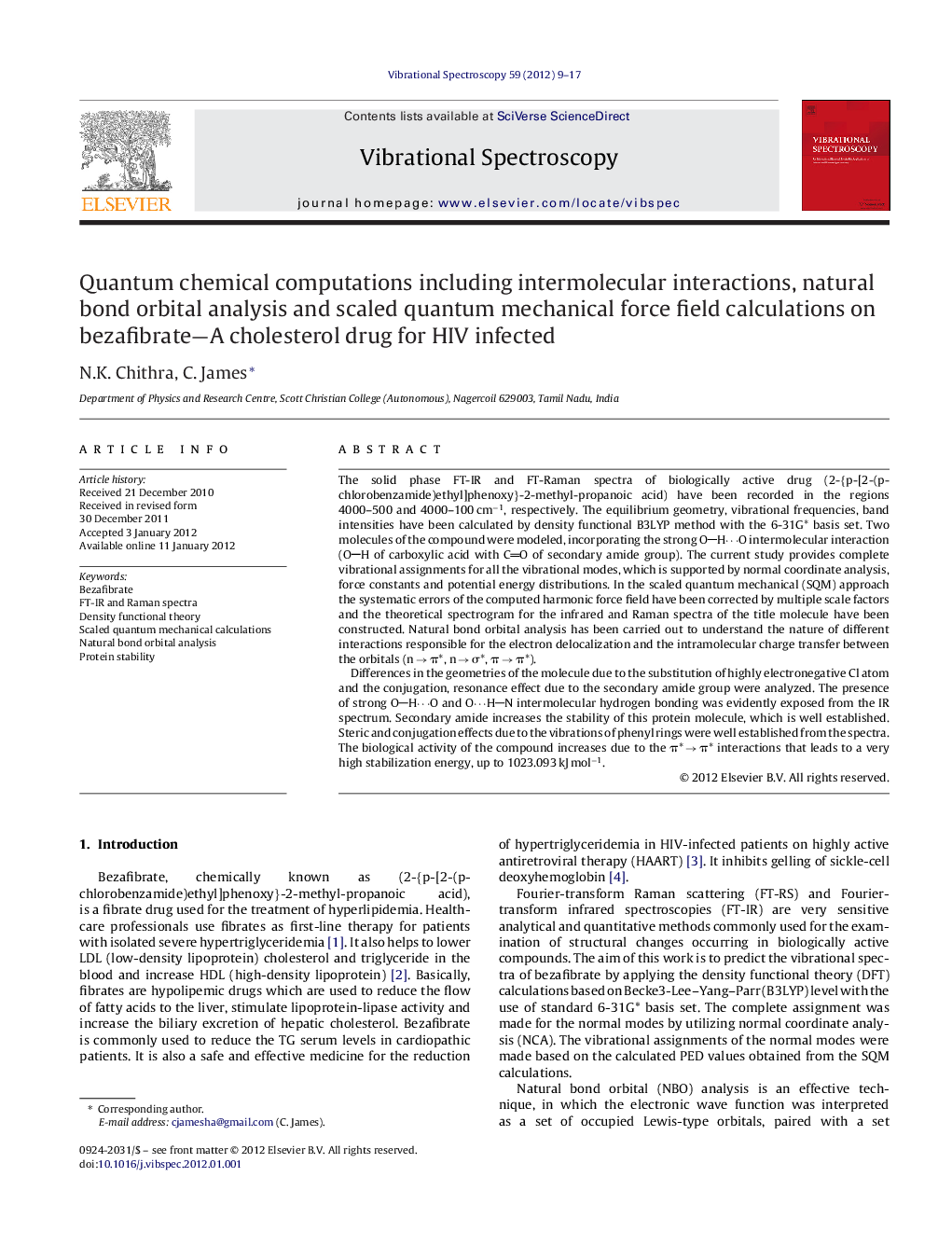| Article ID | Journal | Published Year | Pages | File Type |
|---|---|---|---|---|
| 1251936 | Vibrational Spectroscopy | 2012 | 9 Pages |
The solid phase FT-IR and FT-Raman spectra of biologically active drug (2-{p-[2-(p-chlorobenzamide)ethyl]phenoxy}-2-methyl-propanoic acid) have been recorded in the regions 4000–500 and 4000–100 cm−1, respectively. The equilibrium geometry, vibrational frequencies, band intensities have been calculated by density functional B3LYP method with the 6-31G* basis set. Two molecules of the compound were modeled, incorporating the strong OH⋯O intermolecular interaction (OH of carboxylic acid with CO of secondary amide group). The current study provides complete vibrational assignments for all the vibrational modes, which is supported by normal coordinate analysis, force constants and potential energy distributions. In the scaled quantum mechanical (SQM) approach the systematic errors of the computed harmonic force field have been corrected by multiple scale factors and the theoretical spectrogram for the infrared and Raman spectra of the title molecule have been constructed. Natural bond orbital analysis has been carried out to understand the nature of different interactions responsible for the electron delocalization and the intramolecular charge transfer between the orbitals (n → π*, n → σ*, π → π*).Differences in the geometries of the molecule due to the substitution of highly electronegative Cl atom and the conjugation, resonance effect due to the secondary amide group were analyzed. The presence of strong OH⋯O and O⋯HN intermolecular hydrogen bonding was evidently exposed from the IR spectrum. Secondary amide increases the stability of this protein molecule, which is well established. Steric and conjugation effects due to the vibrations of phenyl rings were well established from the spectra. The biological activity of the compound increases due to the π* → π* interactions that leads to a very high stabilization energy, up to 1023.093 kJ mol−1.
